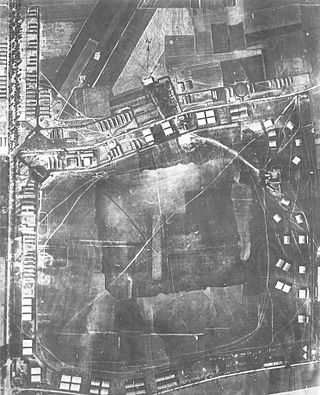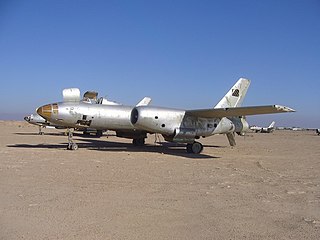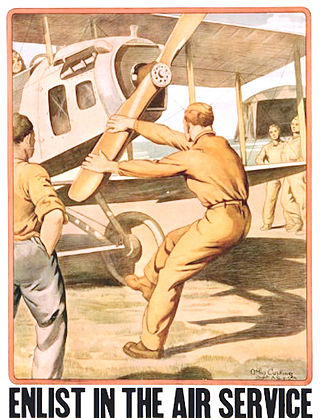
Australia joined a U.S.-led coalition in the Iraq War. Declassified documents reveal that the decision to go to war was taken primarily with a view to enhancing its alliance with the United States.

The Soviet Air Forces (Russian: Военно-Воздушные Силы Союза Советских Социалистических Республик, tr.Voenno-Vozdushnye Sily Soyuza Sovetskih Sotsialisticheskih Respublik, VVS SSSR; literally "Military Air Forces of the Union of Soviet Socialist Republics"; initialism VVS, sometimes referred to as the "Red Air Force", were one of the air forces of the Soviet Union. The other was the Soviet Air Defence Forces. The Air Forces were formed from components of the Imperial Russian Air Service in 1917, and faced their greatest test during World War II. The groups were also involved in the Korean War, and dissolved along with the Soviet Union itself in 1991–92. Former Soviet Air Forces' assets were subsequently divided into several air forces of former Soviet republics, including the new Russian Air Force. The "March of the Pilots" was its marching song.
A group is a military unit or a military formation that is most often associated with military aviation.

Naval Air Station Jacksonville is a large naval air station located approximately eight miles (13 km) south of the central business district of Jacksonville, Florida, United States.

Harrisburg Air National Guard Base is a United States Air Force base, located at Harrisburg International Airport, Pennsylvania. It is located 1.7 miles (2.7 km) west-southwest of Middletown, Pennsylvania.

The 3rd Marine Logistics Group is the Logistics Combat Element (LCE) for III Marine Expeditionary Force currently headquartered on Camp Kinser, Marine Corps Base Smedley D. Butler, Okinawa, Japan. 3rd MLG provides combat service support (CSS) to III MEF units above the organic capability. CSS is the essential capabilities, functions, activities, and tasks necessary to sustain all elements of operating forces in theater at all levels of war. Combat service support includes, but is not limited, to supply, maintenance, transportation, general engineering, health services, and other services required by aviation and ground combat forces to permit those units to accomplish their missions.
In the United States Marine Corps, a Marine Air–Ground Task Force is the principal organization for all missions across the range of military operations. MAGTFs are a balanced air–ground, combined arms task organization of Marine Corps forces under a single commander that is structured to accomplish a specific mission. The MAGTF was formalized by the publishing of Marine Corps Order 3120.3 in December 1963, "The Marine Corps in the National Defense, MCDP 1-0". It stated:
A Marine air–ground task force with separate air ground headquarters is normally formed for combat operations and training exercises in which substantial combat forces of both Marine aviation and Marine ground units are included in the task organization of participating Marine forces.

The Aviation Section, Signal Corps, was the aerial warfare service of the United States from 1914 to 1918, and a direct statutory ancestor of the United States Air Force. It absorbed and replaced the Aeronautical Division, Signal Corps, and conducted the activities of Army aviation until its statutory responsibilities were suspended by President Woodrow Wilson in 1918. The Aviation Section organized the first squadrons of the aviation arm and conducted the first military operations by United States aviation on foreign soil.

The United States Marine Corps is organized within the Department of the Navy, which is led by the Secretary of the Navy (SECNAV). The most senior Marine commissioned officer is the Commandant of the Marine Corps, responsible for organizing, recruiting, training, and equipping the Marine Corps so that it is ready for operation under the command of the unified combatant commanders. The Marine Corps is organized into four principal subdivisions: Headquarters Marine Corps, the Operating Forces, the Supporting Establishment, and the Marine Forces Reserve.

The 313th Military Intelligence Battalion was an active duty Airborne Military Intelligence Battalion of the United States Army.

Orly Air Base was a United States Air Force Facility during the early part of the Cold War, located at Aéroport de Paris-Orly, 15 kilometres (9 mi) south of Paris, France. The American Air Base was located on the north side of the airport, in an area east of the current-day Val-de-Marne/Essonne.

The United States Marine Corps Aviation (USMCA) is the aircraft arm of the United States Marine Corps. Aviation units within the Marine Corps are assigned to support the Marine Air-Ground Task Force, as the aviation combat element, by providing six functions: assault support, antiair warfare, close air support, electronic warfare, control of aircraft and missiles, and aerial reconnaissance. The Corps operates rotary-wing, tiltrotor, and fixed-wing aircraft mainly to provide transport and close air support to its ground forces. Other aircraft types are also used in a variety of support and special-purpose roles. All Marine Corps aviation falls under the influence of the Deputy Commandant for Aviation, whose job is to advise the Commandant of the Marine Corps in all matters relating to aviation, especially acquisition of new assets, conversions of current aircraft, maintenance, operation, and command.

The 109th Airlift Squadron is a unit of the Minnesota Air National Guard 133d Airlift Wing located at Minneapolis–Saint Paul Joint Air Reserve Station, Minnesota. The squadron is equipped with the C-130H Hercules.

Mainz-Finthen Airfield(German: Flugplatz Mainz-Finthen) is a recreational aerodrome in Germany, located about 3 miles (5 km) southwest of Mainz and approximately 320 miles (510 km) southwest of Berlin.

Al Taqaddum Airbase or Al Taqaddum AB, called TQ in military shorthand slang, is an air base that is located in central Iraq, approximately 74 kilometers west of Baghdad, at Habbaniyah. The airfield is served by two runways 13,000 and 12,000 feet (3,700 m) long. Since 2004, it has been known as Camp Taqaddum. It was formerly known as Tammuz Airbase.

Colombey-les-Belles Aerodrome, was a temporary World War I airfield in France used by the Air Service of the American Expeditionary Force. It was located near Colombey-les-Belles, in the Meurthe-et-Moselle department in north-eastern France.

With the purchase of its first airplane, built and successfully flown by Orville and Wilbur Wright, in 1909 the United States Army began the training of flight personnel. This article describes the training provided in those early years, though World War I, and the immediate years after the war until the establishment of the United States Army Air Corps Flight Training Center in San Antonio, Texas during 1926.

Romorantin - Pruniers Air Detachment is a French Air Force military facility, located 6 kilometres (3.7 mi) southwest of Romorantin-Lanthenay, in the Loir-et-Cher department of central France.

Base Lieutenant Étienne Mantoux, formerly Étain-Rouvres Air Base is a base of the French Army Light Aviation. It is located on the Lorraine Plateau in northeastern France, 1 mile (1.6 km) to the west of Étain; on the west side of the Départemental 906 (D906) (Meuse) road, adjacent to the village of Rouvres-en-Woevre in the Meuse département about 12 miles east of Verdun. It was built in 1937 and has been used by the French, British, German, and U.S. Air Forces, before the French Army took the base over, after 1967.

















